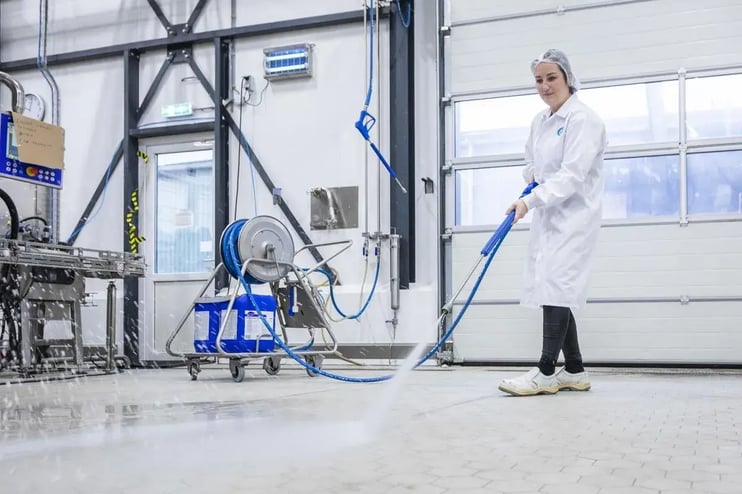Cleaning according to HACCP

Cleaning in a production facility is a two-part process, which must be applied to all food contact surfaces and associated equipment and premises. The first step is cleaning, aka removing bulk residue (soil) from a surface, and the second step is sanitation, or in other words killing microorganisms remaining on the surface. In this blog, we describe different aspects you should consider when developing a cleaning program.
Cleaning procedures
Every organization that is working according to HACCP is working with cleaning procedures. Within the procedures, different questions need to be asked, as what are the cleaning procedures to be followed? How is cleaning conducted? What steps must be followed when cleaning and sanitizing?
Step one of the cleaning process is checking what is being cleaned and what residue is being removed. Different chemicals can affect different surfaces, so it is important to select your chemicals carefully. Select a chemical that is appropriate for removing the target soil. We will discuss the chemicals in more detail later.
The next step is to conduct how sanitation is being achieved. Chemical or heat sanitation steps are common in every organization. The right chemicals need to be selected considering the surface and type of microorganisms targeted. In regard to heat sanitation, considering temperature and immersion times are important.
Chemicals
As mentioned above, it is important to select your chemicals carefully. Working with chemicals, there are a few points that need to be defined for your organization.
- Chemical concentration: chemicals are typically diluted to a use strength. The dilution is important for effectiveness and cost control. Consider how the product is diluted and how dilution rates are verified.
- Contact times of the cleaning chemicals: cleaning chemicals and sanitisers may require specific contact times with the surface to be effective. These need to be considered and included in cleaning specifications.
- Storage of chemicals: how and where are chemicals stored? Make sure they are stored in a safe place and not accessible for everyone.
- Check other factors: other factors such as pH and temperature may also impact upon effectiveness of both cleaning and sanitation and must be considered in the specification.
General cleaning duties
In addition to the standard cleaning procedures and the chemicals, there are some general cleaning duties.
First of all, it is important to determine the cleaning frequency. For example, when is cleaning carried out? It is important to follow the different procedures for each cleaning frequency (hourly, daily, weekly et cetera). Within this frequency, safety is essential. Take care of the personal protective equipment that must be worn by employees and determine the safeties that must be made during cleaning operation and the handling of chemicals. The safety regulations can be different for every cleaning frequency.
Secondly, determine the cleaning equipment for all cleaning procedures. What equipment must be used, how is it used, and what calibration or setup steps are required for effective cleaning and sanitation? After cleaning with the cleaning equipment, it could be time for rinsing the equipment and surfaces. Check if the equipment or surface requires rinsing after the use of cleaning and sanitation chemicals.
Lastly, it is about the final check. Determine what makes a cleaning task acceptable upon completion and how you verify that cleaning and sanitation have been acceptably completed. This is possible with for example visual tests or analytical tests, such as Microbiological tests, ATP tests, or residue tests. Make sure that after the cleaning process is completed, it is documented and recorded.
More information?
Do you want to know more about HACCP? With our HACCP Checklist, you can easily check all requirements of HACCP.
.webp)





